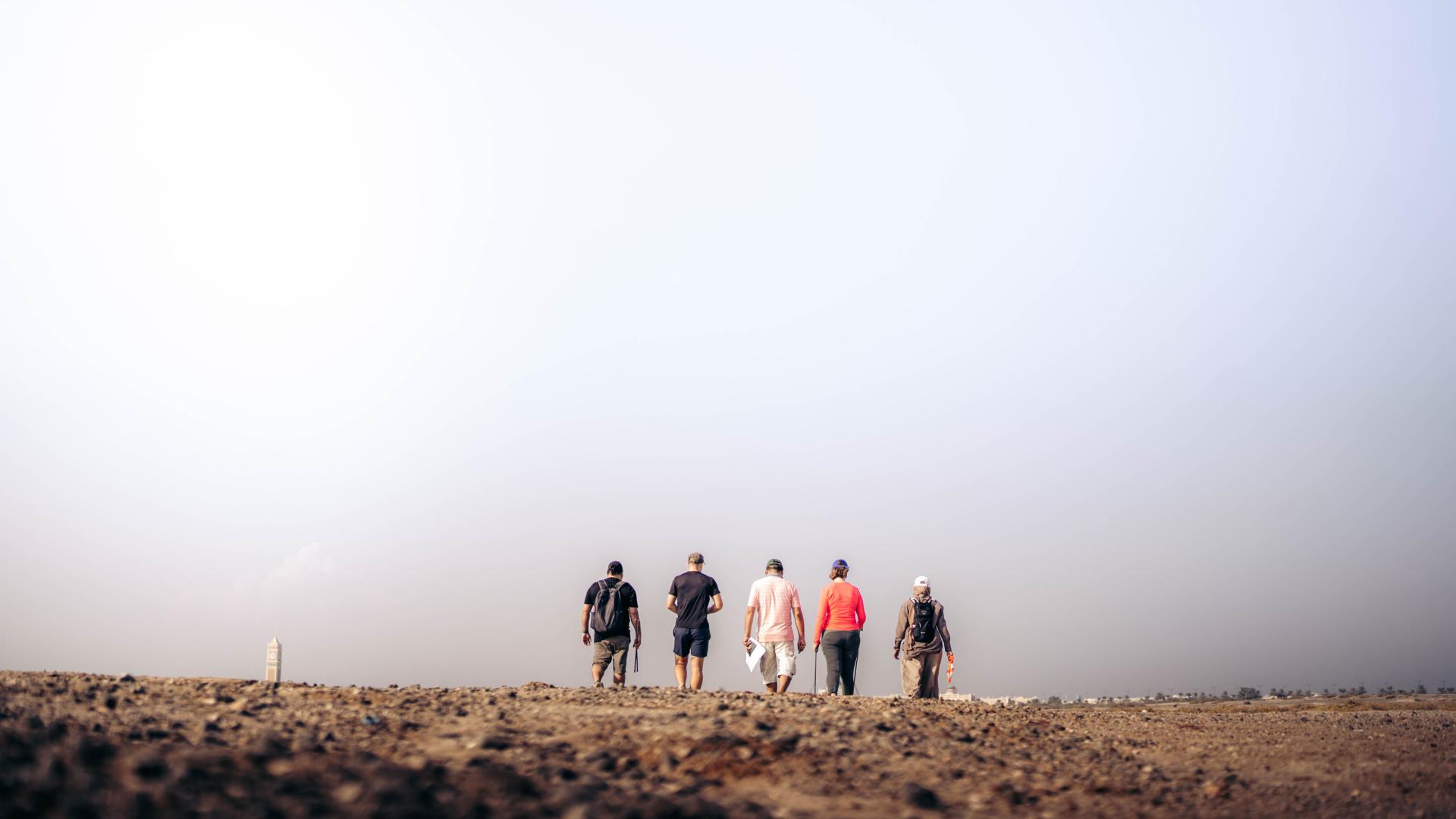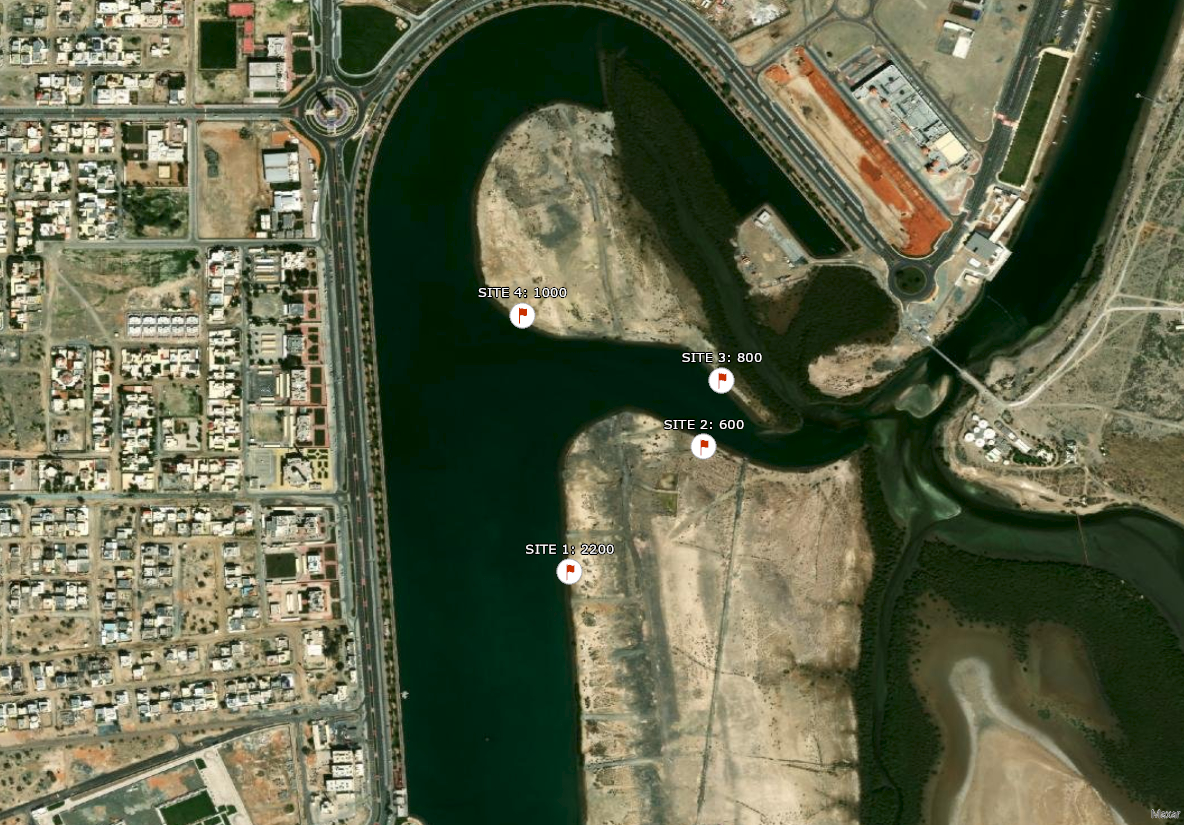Khor Kalba
About the site
The site is located in Kalba, which is on the Eastern coast of the UAE and belongs to the Emirate of Sharjah. Kalba is home to a Conservation Reserve that encompasses a large mangrove forest around its creek, namely Khor Kalba. The Khor Kalba Conservation Reserve, managed by the Environment and Protected Areas Authority (EPAA), also provides habitat for the Arabian collared kingfisher (Todiramphus chloris kalbaensis), an endemic species which can only be found in Kalba.
About the project in Khor Kalba
In Khor Kalba, 2,600 saplings were planted in 2022, 1,000 saplings in 2023, and 1,000 saplings in 2024, totaling 4,600 planted saplings, which is equivalent to 0.6 ha. The aim of the project in Khor Kalba is to plant mangroves along the banks of the artificial lagoon to assist with the regeneration of the wider ecosystem through a holistic approach. The mangroves could also help stabilize the banks of the lagoon and eventually provide additional habitat for endemic species. In addition to planting activities, biodiversity and vegetation data were collected through surveys. Given that the site provides great opportunities for outreach activities and citizen science, volunteers joined on some of the activities.







